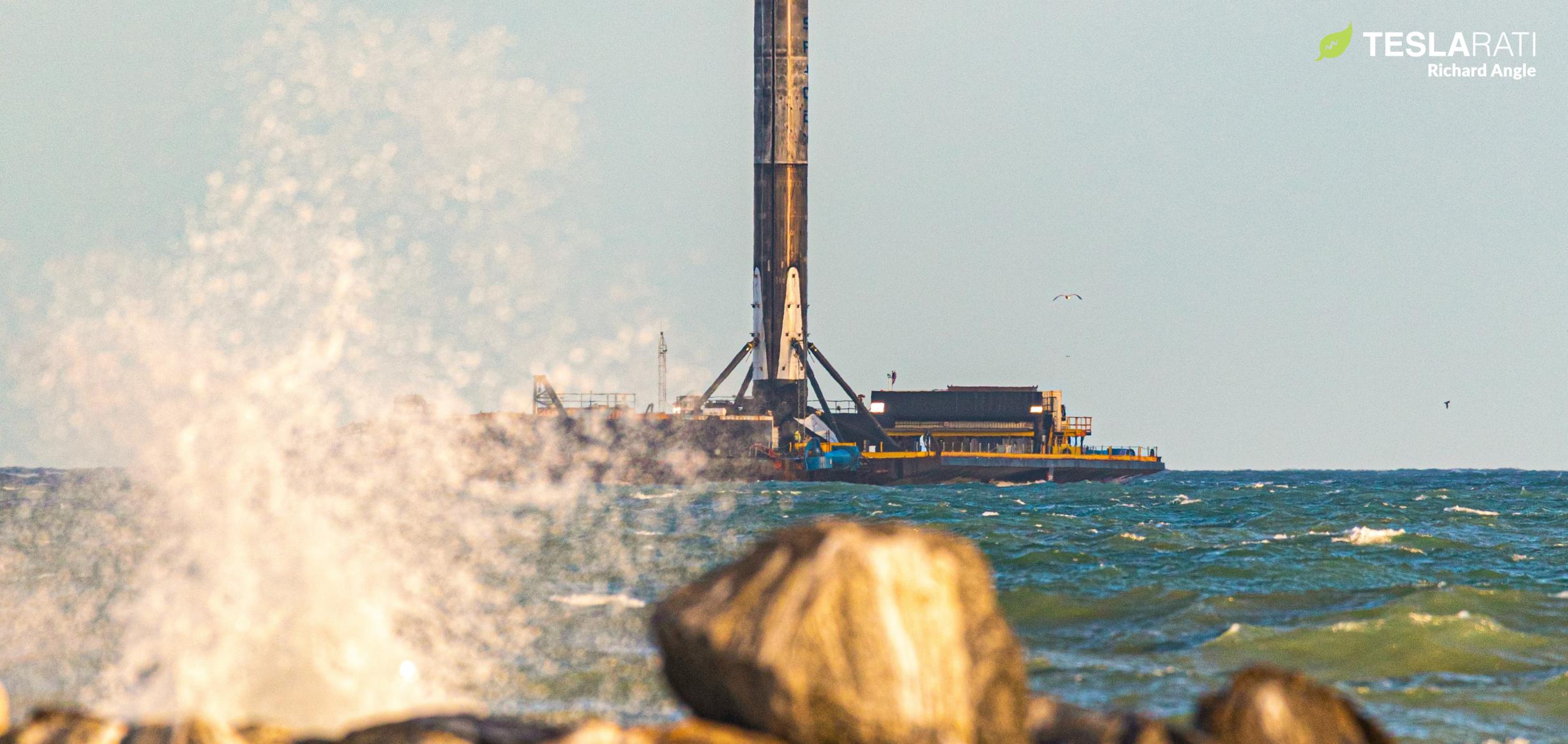
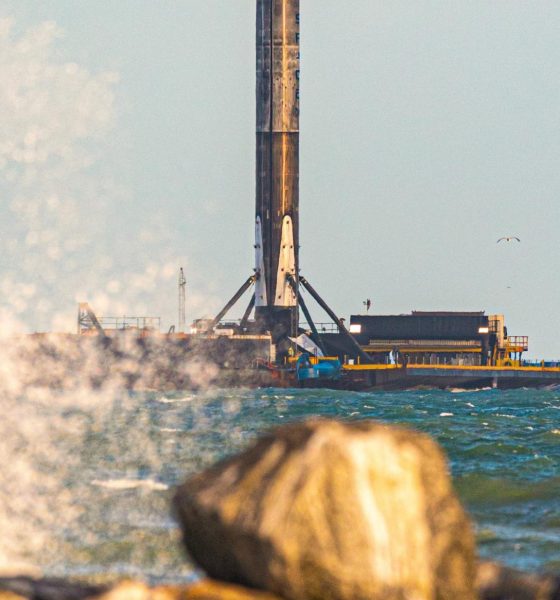
News
SpaceX Falcon 9 greeted by iconic Florida sunset after first rocket landing of the decade
After completing its fourth flawless orbital-class launch and landing in 16 months, SpaceX’s latest reusable Falcon 9 rocket has successfully returned to dry land and was greeted by a spectacular Florida sunset during its port arrival.
Safely secured aboard drone ship Of Course I Still Love You (OCISLY) by SpaceX’s famous Octagrabber robot, which uses claws its tank-like heft to physically hold the rocket down, Falcon 9 booster B1049 passed through the mouth of Port Canaveral on January 9th. This effectively marked the end of its third drone ship recovery and fourth landing overall since its orbital-class launch debut in September 2018, averaging a SpaceX launch every four months.
B1049.4 supported SpaceX’s second launch of upgraded Starlink v1.0 communications satellites and the 60 spacecraft it helped send to orbit almost certainly catapulted the company into the position of owning the world’s largest private satellite constellation – now measuring some 175 operational spacecraft strong. Those 60 new Starlink satellites have since deployed their solar arrays, performed basic systems checkouts, activated their krypton-fueled ion thrusters, and begun raising their orbits to around 350 km (220 mi). After arriving at 350 km, SpaceX will carefully analyze the performance of each satellite and send all healthy spacecraft to their final operational altitude of 550 km (340 mi).
Teslarati photographer Richard Angle was present for both sides of Falcon 9 B1049’s fourth orbital-class launch and landing, capturing the booster’s January 6th liftoff from Cape Canaveral Air Force Station Launch Complex 40 (CCAFS LC-40) and its January 9th Port Canaveral arrival aboard drone ship OCISLY. Given the spectacular Florida sunset that greeted the rocket, B1049 clearly has a preferred color palette – fire.
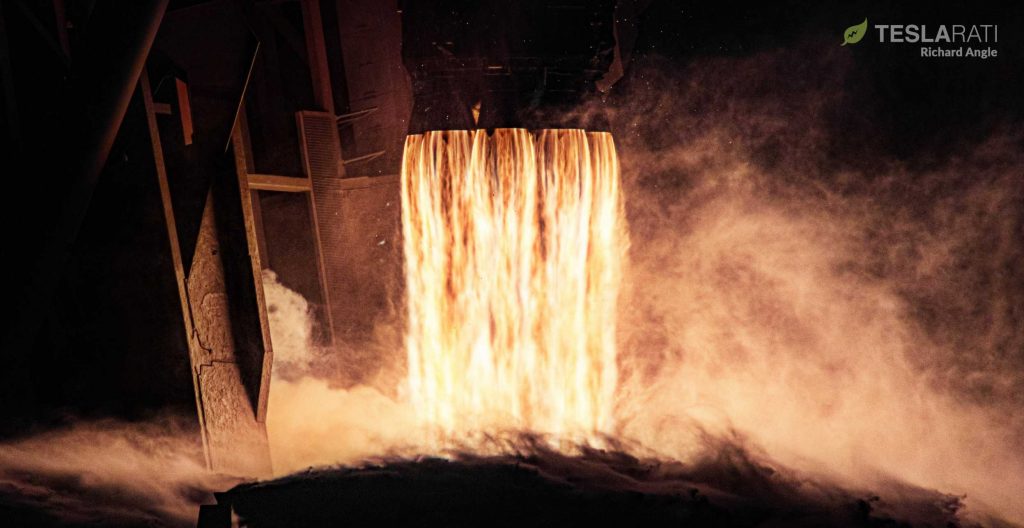
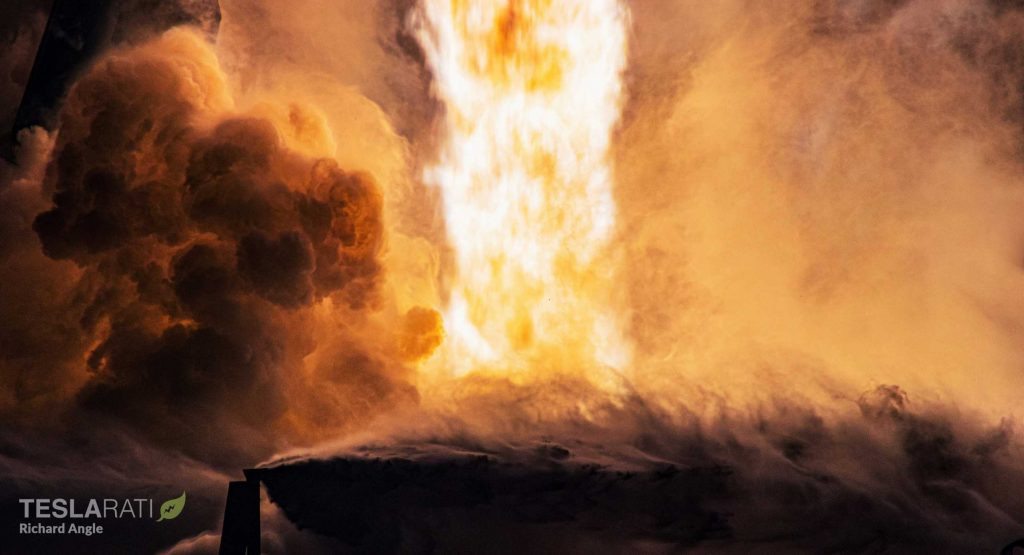
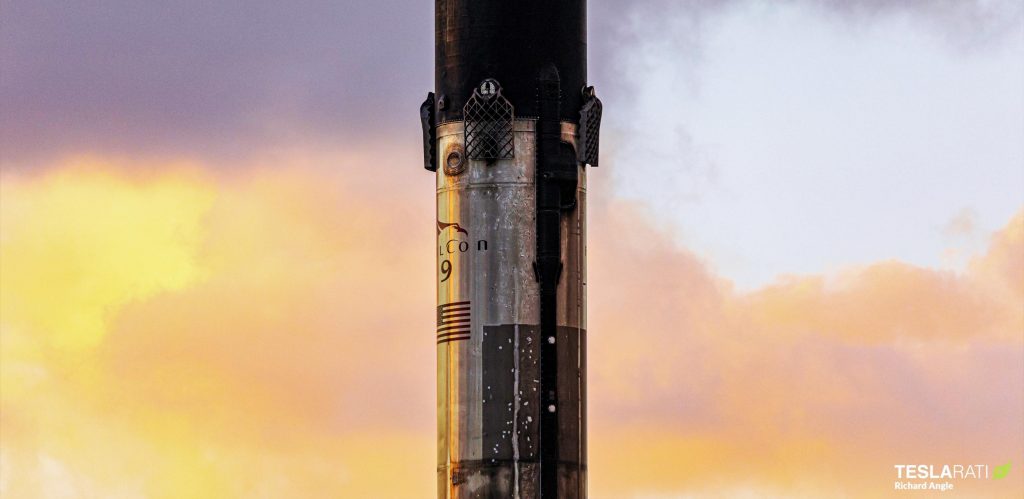
Falcon 9 B1049 is powered by nine Merlin 1D engines capable of burning liquid oxygen and refined kerosene (RP-1) to produce a maximum thrust of 7600 kN (1.7 million lbf), giving it a thrust to weight ratio of more than 1.4 even when fully loaded with some 525 metric tons (1.2 million lb) of propellant.
According to SpaceX and CEO Elon Musk, Falcon 9’s newest Block 5 boosters – debuted in May 2018 and expected to be the last major upgrade to the family – are designed to be capable of at least 10 orbital-class launches each. A step further, they could potentially be able to perform dozens of missions before retirement is unavoidable, although that would reportedly require the same sort of in-depth overhauls that are routine for modern airliners. Regardless of SpaceX’s aspirations of 10-100 flights per booster, the company is making great progress but undeniably has a long ways to go.
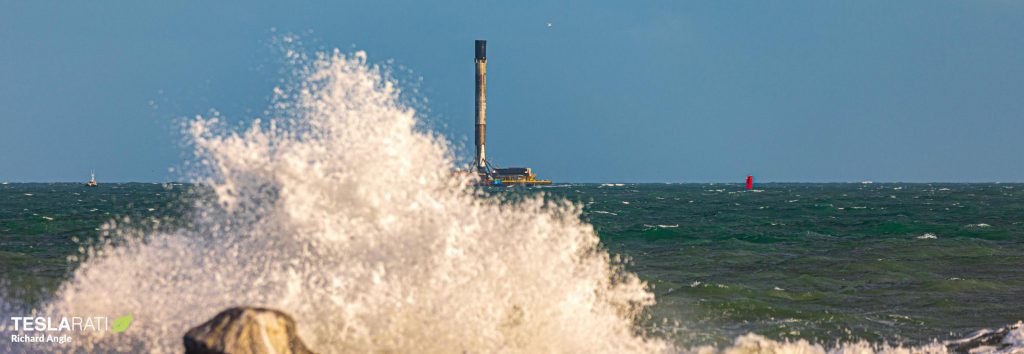
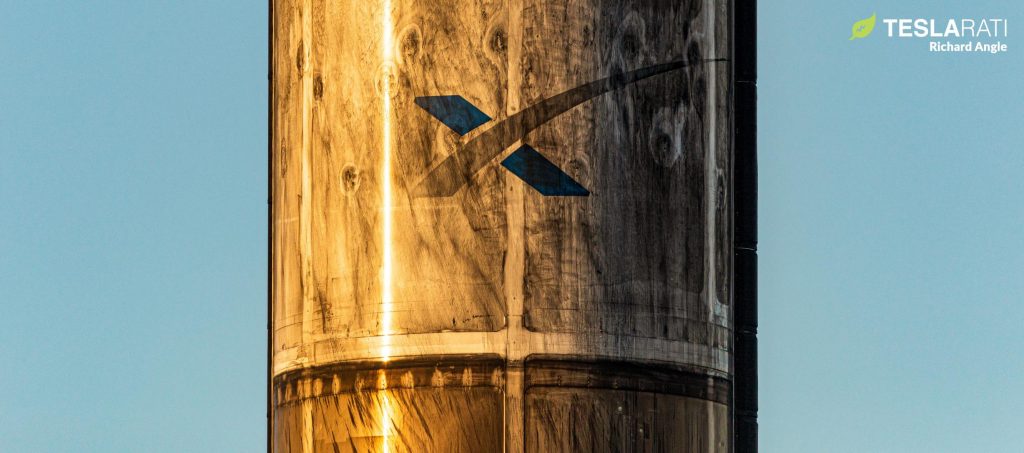

Still, it’s not actually as long as it may seem. On January 6th, Falcon 9 B1049 became the second SpaceX booster to successfully launch four times, following in the footsteps of B1048’s record-breaking fourth flight – completed in November 2019. Now in possession of two consecutively-built Falcon 9 boosters with four flights under each of their belts, SpaceX should be able to quickly determine whether its fleet of reusable rockets can be trusted with four launches (and more).
Additionally, after two months for technicians and engineers to inspect and repair the booster, B1048 could be ready for its fifth launch far sooner than later. SpaceX wrapped up B1049’s fourth post-recovery processing on January 13th – a relatively brisk three and a half days from port arrival to horizontal transport. The booster was moved to one of SpaceX’s many Cape Canaveral hangars, where – just like B1048 – it will be inspected, refurbished, and turned around for its fifth launch sometime in the near future.
Check out Teslarati’s Marketplace! We offer Tesla accessories, including for the Tesla Cybertruck and Tesla Model 3.

Elon Musk
SpaceX’s Starship FL launch site will witness scenes once reserved for sci-fi films
A Starship that launches from the Florida site could touch down on the same site years later.
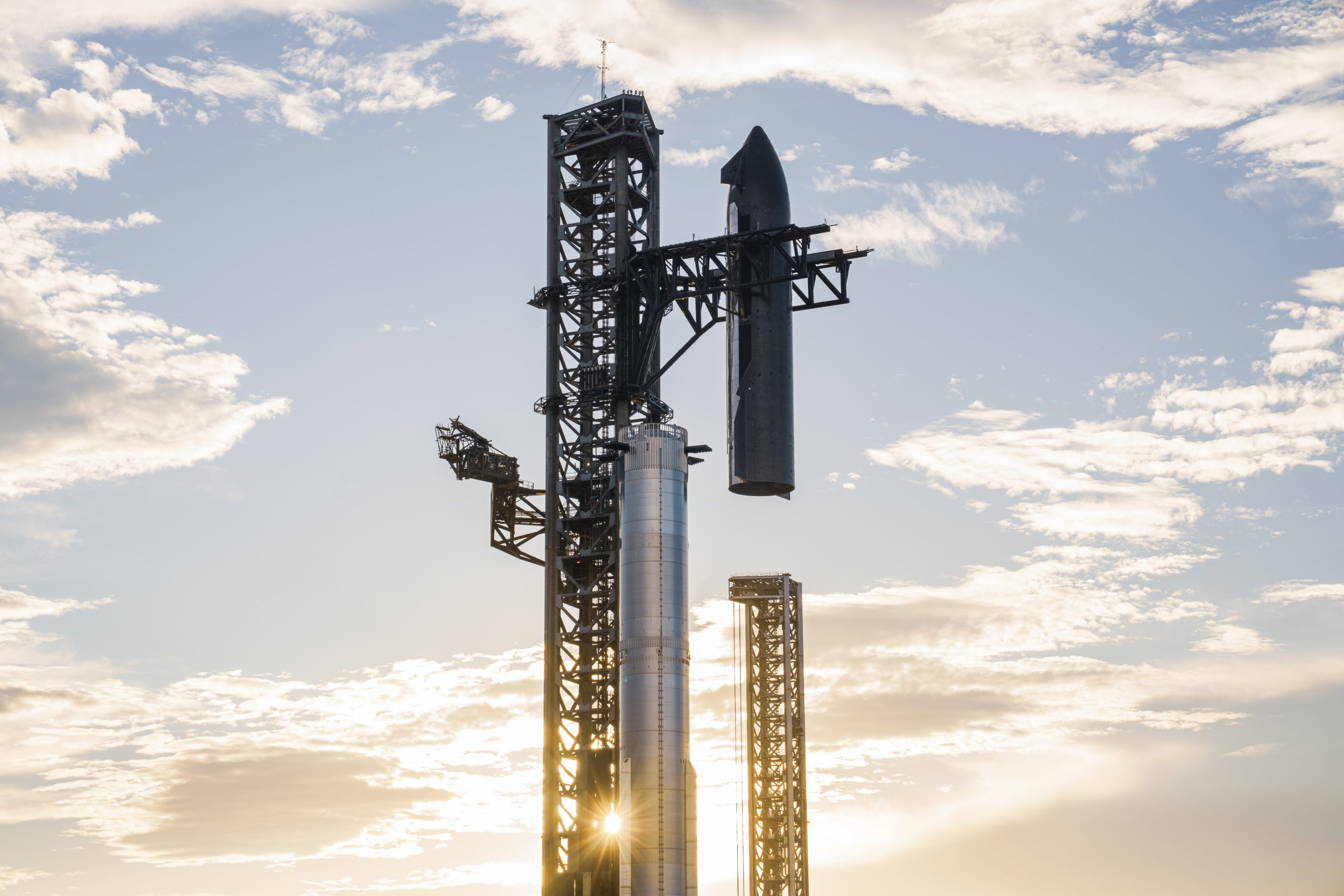
The Department of the Air Force (DAF) has released its Final Environmental Impact Statement for SpaceX’s efforts to launch and land Starship and its Super Heavy booster at Cape Canaveral Space Force Station’s SLC-37.
According to the Impact Statement, Starship could launch up to 76 times per year on the site, with Super Heavy boosters returning within minutes of liftoff and Starship upper stages landing back on the same pad in a timeframe that was once only possible in sci-fi movies.
Booster in Minutes, Ship in (possibly) years
The EIS explicitly referenced a never-before-seen operational concept: Super Heavy boosters will launch, reach orbit, and be caught by the tower chopsticks roughly seven minutes after liftoff. Meanwhile, the Starship upper stage will complete its mission, whether a short orbital test, lunar landing, or a multi-year Mars cargo run, and return to the exact same SLC-37 pad upon mission completion.
“The Super Heavy booster landings would occur within a few minutes of launch, while the Starship landings would occur upon completion of the Starship missions, which could last hours or years,” the EIS read.
This means a Starship that departs the Florida site in, say, 2027, could touch down on the same site in 2030 or later, right beside a brand-new stack preparing for its own journey, as noted in a Talk Of Titusville report. The 214-page document treats these multi-year round trips as standard procedure, effectively turning the location into one of the world’s first true interplanetary spaceports.
Noise and emissions flagged but deemed manageable
While the project received a clean bill of health overall, the EIS identified two areas requiring ongoing mitigation. Sonic booms from Super Heavy booster and Starship returns will cause significant community annoyance” particularly during nighttime operations, though structural damage is not expected. Nitrogen oxide emissions during launches will also exceed federal de minimis thresholds, prompting an adaptive management plan with real-time monitoring.
Other impacts, such as traffic, wildlife (including southeastern beach mouse and Florida scrub-jay), wetlands, and historic sites, were deemed manageable under existing permits and mitigation strategies. The Air Force is expected to issue its Record of Decision within weeks, followed by FAA concurrence, setting the stage for rapid redevelopment of the former site into a dual-tower Starship complex.
SpaceX Starship Environmental Impact Statement by Simon Alvarez
News
Tesla Full Self-Driving (FSD) testing gains major ground in Spain
Based on information posted by the Dirección General de Tráfico (DGT), it appears that Tesla is already busy testing FSD in the country.
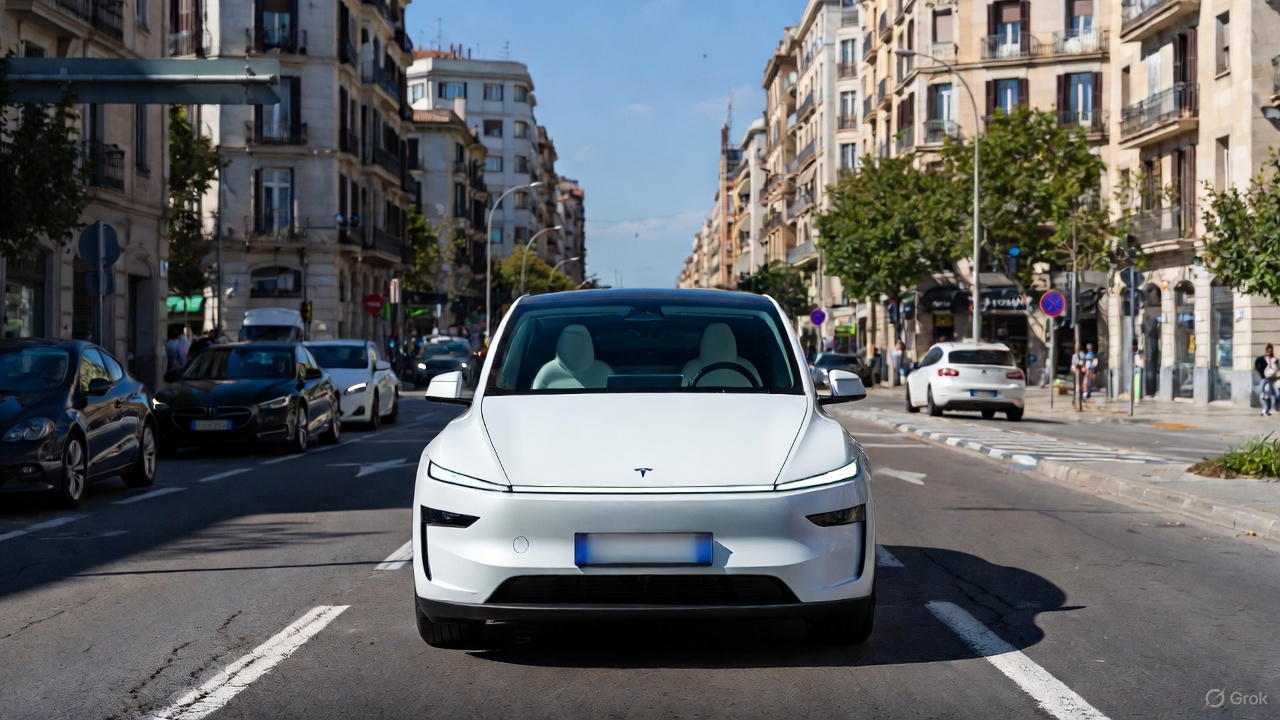
Tesla’s Full Self-Driving (Supervised) program is accelerating across Europe, with Spain emerging as a key testing hub under the country’s new ES-AV framework program.
Based on information posted by the Dirección General de Tráfico (DGT), it appears that Tesla is already busy testing FSD in the country.
Spain’s ES-AV framework
Spain’s DGT launched the ES-AV Program in July 2025 to standardize testing for automated vehicles from prototypes to pre-homologation stages. The DGT described the purpose of the program on its official website.
“The program is designed to complement and enhance oversight, regulation, research, and transparency efforts, as well as to support innovation and advancements in automotive technology and industry. This framework also aims to capitalize on the opportunity to position Spain as a pioneer and leader in automated vehicle technology, seeking to provide solutions that help overcome or alleviate certain shortcomings or negative externalities of the current transportation system,” the DGT wrote.
The program identifies three testing phases based on technological maturity and the scope of a company’s operations. Each phase has a set of minimum eligibility requirements, and applicants must indicate which phase they wish to participate in, at least based on their specific technological development.
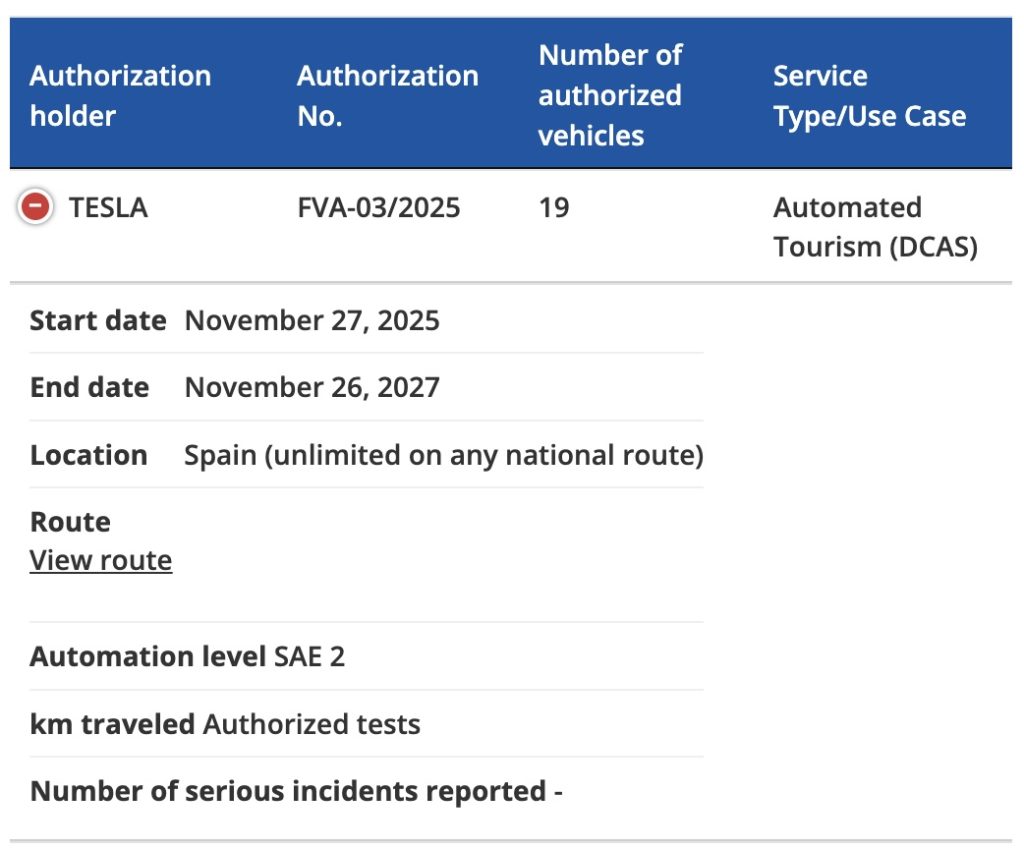
Tesla FSD tests
As noted by Tesla watcher Kees Roelandschap on X, the DGT’s new framework effectively gives the green flight for nationwide FSD testing. So far, Tesla Spain has a total of 19 vehicles authorized to test FSD on the country’s roads, though it would not be surprising if this fleet grows in the coming months.
The start date for the program is listed at November 27, 2025 to November 26, 2027. The DGT also noted that unlimited FSD tests could be done across Spain on any national route. And since Tesla is already in Phase 3 of the ES-AV Program, onboard safety operators are optional. Remote monitoring would also be allowed.
Tesla’s FSD tests in Spain could help the company gain a lot of real-world data on the country’s roads. Considering the scope of tests that are allowed for the electric vehicle maker, it seems like Spain would be one of the European countries that would be friendly to FSD’s operations. So far, Tesla’s FSD push in Europe is notable, with the company holding FSD demonstrations in Germany, France, and Italy. Tesla is also pushing for national approval in the Netherlands in early 2026.
News
Tesla FSD V14.2.1 is earning rave reviews from users in diverse conditions
Tesla’s Full Self-Driving (Supervised) software continues its rapid evolution, with the latest V14.2.1 update drawing widespread praise.

Tesla’s Full Self-Driving (Supervised) software continues its rapid evolution, with the latest V14.2.1 update drawing widespread praise for its smoother performance and smarter decision-making.
Videos and firsthand accounts from Tesla owners highlight V14.2.1 as an update that improves navigation responsiveness, sign recognition, and overall fluidity, among other things. Some drivers have even described it as “more alive than ever,” hinting at the system eventually feeling “sentient,” as Elon Musk has predicted.
FSD V14.2.1 first impressions
Early adopters are buzzing about how V14.2.1 feels less intrusive while staying vigilant. In a post shared on X, Tesla owner @LactoseLunatic described the update as a “huge leap forward,” adding that the system remains “incredibly assertive but still safe.”
Another Tesla driver, Devin Olsenn, who logged ~600 km on V14.2.1, reported no safety disengagements, with the car feeling “more alive than ever.” The Tesla owner noted that his wife now defaults to using FSD V14, as the system is already very smooth and refined.
Adverse weather and regulatory zones are testing grounds where V14.2.1 shines, at least according to testers in snow areas. Tesla watcher Sawyer Merritt shared a video of his first snowy drive on unplowed rural roads in New Hampshire, where FSD did great and erred on the side of caution. As per Merritt, FSD V14.2.1 was “extra cautious” but it performed well overall.
Sign recognition and freeway prowess
Sign recognition also seemed to show improvements with FSD V14.2.1. Longtime FSD tester Chuck Cook highlighted a clip from his upcoming first-impressions video, showcasing improved school zone behavior. “I think it read the signs better,” he observed, though in standard mode, it didn’t fully drop to 15 mph within the short timeframe. This nuance points to V14.2.1’s growing awareness of temporal rules, a step toward fewer false positives in dynamic environments.
FSD V14.2.1 also seems to excel in high-stress highway scenarios. Fellow FSD tester @BLKMDL3 posted a video of FSD V14.2.1 managing a multi-lane freeway closure due to a police chase-related accident. “Perfectly handles all lanes of the freeway merging into one,” the Tesla owner noted in his post on X.
FSD V14.2.1 was released on Thanksgiving, much to the pleasant surprise of Tesla owners. The update’s release notes are almost identical to the system’s previous iteration, save for one line item read, “Camera visibility can lead to increased attention monitoring sensitivity.”









